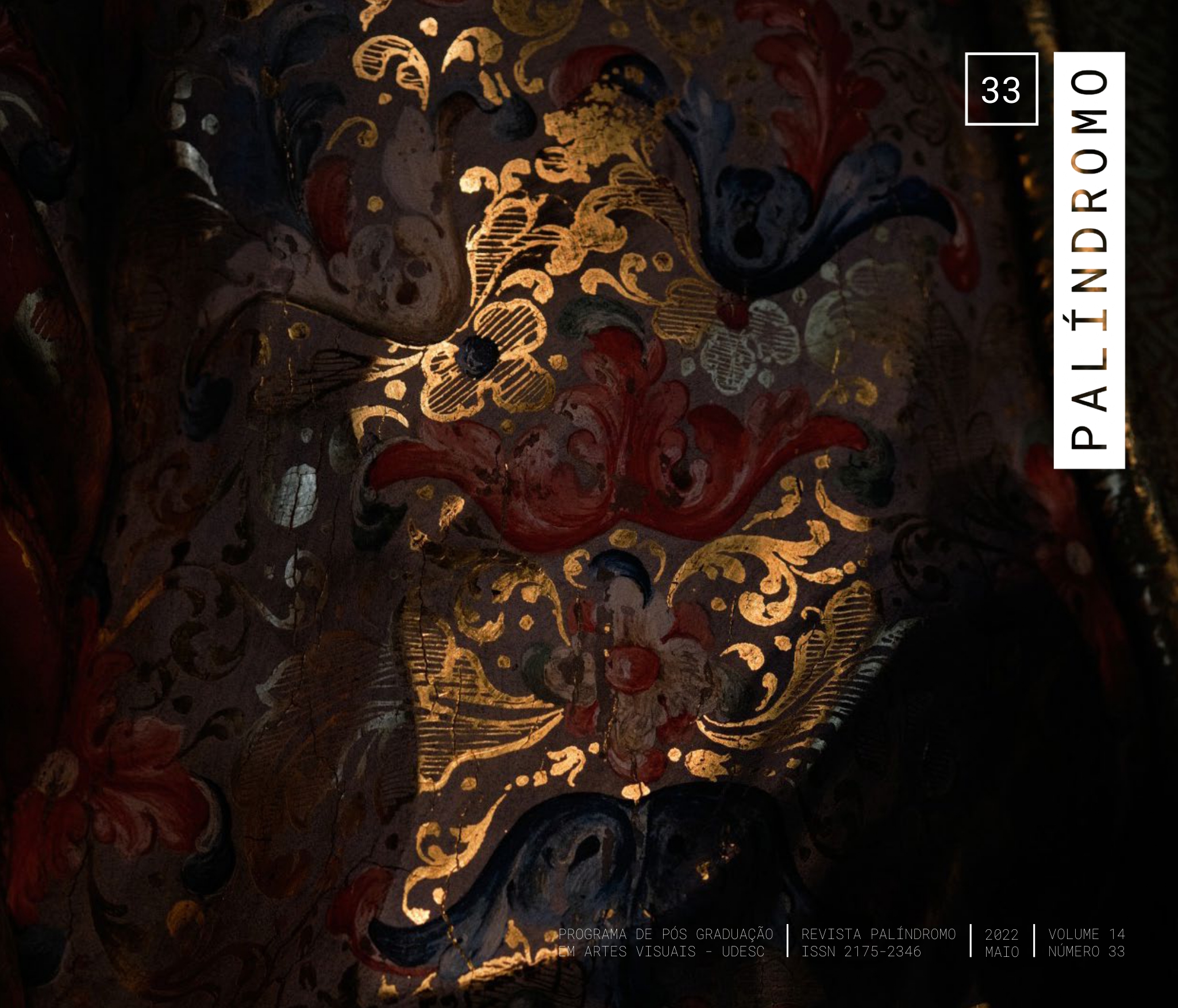The detail as a temporal device of the architectural restoration in Portugal, in the 19th century: the case of the train in the convent of Madre de Deus, in Lisbon
DOI:
https://doi.org/10.5965/2175234614332022064Keywords:
19th Century Architecture, Restoration, Madre Deus Convent, Chapiter, TrainAbstract
In Lisbon, in the 19th century, during the restoration of the Madre de Deus Convent, a building founded in the 16th century, a steam train entering a tunnel was carved on the chapitel of one of the columns of one of the cloisters. We intend to demonstrate that this was not a mistake, but the figuration of an explicitly modern detail that functioned as a temporal device that distinguished the changes introduced by the restoration from the original parts of the building, in line with the philological restoration by Camillo Boito, even when they recreated the original architectural style, in accordance with the principles of the stylistic restoration by Eugène-Emmanuel Viollet-le-Duc. In a restoration still dominated by the doctrine of Viollet-le-Duc, represents a first impact of the reception of Boito's ideas in Portugal.
Downloads
References
ALVES, A. N. Ramalho Ortigão e o Culto dos Monumentos Nacionais no Século XIX. Lisboa: Faculdade de Letras da Universidade de Lisboa, 2009.
ATANÁZIO, M. C. M. A Arte do Manuelino. Mecenas, influências, espaço. Lisboa: Editorial Estampa, 1984, 218 p.
BOITO, C. Questioni pratiche dé Belle Arti. Milano: Ulrico Hoepli, 1893, 419 p.
CARVALHO, J. M. de. O Conimbricense, Coimbra, n.º 4762, p. 1, 1893.
Convento da Madre de Deus e Asylo de D. Maria Pia, A Revolução de Setembro, n.º 8234, p.1, 1869.
CUSTÓDIO, J. M. R. “Renascença” Artística e Práticas de Conservação e Restauro Arquitetónico em Portugal, durante a 1ª República. Évora, Universidade de Évora, 2008, Volume I, Tomo I.
GONÇALVES, A. Sé Velha de Coimbra, Arte Portugueza, Lisboa, n.º 6, p. 122 e 123, 1895.
GUIMARÃES, J. R. O Mosteiro da Madre de Deus I, Artes e Letras, n.º 3, p. 46, 1874.
GUIMARÃES, J. R. O Mosteiro da Madre de Deus II, Artes e Letras, n.º 4, p. 50 e 51, 1874.
KÜHL, B. M. “Os Restauradores e o Pensamento de Camillo Boito sobre a Restauração”. In: BOITO, C. Os Restauradores. São Paulo: Ateliê Editorial, 2008 (3ª edição), pp. 9-28.
MAIA, M. H. Património e Restauro em Portugal. Lisboa: Edições Colibri, IHA – Estudos de Arte Contemporânea da Faculdade de Ciências Sociais e Humanas da Universidade Noa de Lisboa, 2007, 394 p.
ORTIGÃO, R. O Culto da Arte em Portugal. Lisboa: António Maria Pereira,1896, 176 p.
PEREIRA, G. “O Convento da Madre de Deus”. In: A Arte e a Natureza em Portugal. Porto: Emílio Biel e C.ª Editores, 1908, vol. 8º, s/p.
PEREIRA, G. Restaurar e Conservar. Arte Portugueza. Revista de Archeologia e Arte Moderna, n.º 6, p. 121, 1895.
REIFF, D. D. Viollet-le-Duc and Historic Restoration: the West Portals of Notre-Dame. Journal of the Society of Architectural Historians, vol. 30, n.º 1, pp. 17-30, 1971. DOI: https://doi.org/10.2307/988670
RODRIGUES, P. S. “O Culto da Arte em Portugal e os Antecedentes Oitocentistas de A Nossa Casa de Raul Lino”. In: ANDRÈ, P. (Coord.). Celebrando a Nossa Casa (1918-2018) de Raul Lino. Antologia de Ensaios. Lisboa: DINÂMIA’CET-IUL – Centro de Estudos sobre a Mudança Socioeconómica e o Território, 2018. p. 118-128.
RODRIGUES, P. S. Património, Identidade e História. O Valor e o Significado dos Monumentos Nacionais no Portugal de Oitocentos. Lisboa: Faculdade de Ciências Sociais e Humanas da Universidade Nova de Lisboa, vol. I, 1998, 447p.
RODRIGUES, R. M. Entre a Salvaguarda e a destruição: a extinção das ordens religiosas em Portugal e as suas consequências para o património artístico dos conventos. Lisboa: Faculdade de Letras da Universidade de Lisboa, 2017.
ROSAS, L. M. C. Monumentos Pátrios. A Arquitectura Religiosa Medieval – Património e Restauro (1935-1928). Porto: Faculdade de Letras da Universidade do Porto, 1995, volume I.
SABUGOSA, C. de. A Rainha D. Leonor, 1458-1525. s.l.: Portugália Editora, 1921, 380 p.
SANTOS, R. “Madre de Deus”. In: Guia de Portugal. Lisboa e arredores. Lisboa: Biblioteca Nacional, 1924, vol. I, p. 319.
SERUYA, A. I.; HENRIQUES, A. C.; HENRIQUES, P.; Et. Al. (Coord.), Igreja da Madre de Deus. História, Conservação e Restauro. Lisboa: Ministério da Cultura, Instituto Português de Museus, Instituto Português de Conservação e Restauro, 2002, 257 p.
SILVA, J. H. P. “A arquitetura no retábulo de Santa Auta”. In: Páginas de História da Arte. Estudos e Ensaios. Lisboa: Editorial Estampa, 1993, p. 87.
TELLES, L. Mosteiro e Egreja da Madre de Deus. Lisboa: Imprensa Moderna, 1899, 31 p.
TRINDADE, L. Catálogo da Livraria do Fallecido Distincto bibliographo e Bibliophilo José Maria Nepomuceno. Lisboa: Empresa Editora de Francisco Arthur da Silva, 1897, 169 p.
VASCONCELOS, A. de. A Sé-Velha de Coimbra. Coimbra: Arquivo da Universidade de
Coimbra, 1993, volume I.
VIOLLET-LE-DUC, E. “Restauration”. In: Dictionnaire Raisonné de l’Architecture Française du XIe aux XVIe Siècle. Paris: A. Morel, 1866, Tome 8, pp. 14-34.
Downloads
Published
How to Cite
Issue
Section
License
Copyright (c) 2022 Paulo Simões Rodrigues

This work is licensed under a Creative Commons Attribution 4.0 International License.
COPYRIGHT STATEMENT
The articles published by the magazine are free to use, intended for academic and non-commercial applications. Copyright is all assigned to the magazine. The articles whose authors are identified represent the expression from the point of view of their authors and not the official position of Palíndromo Magazine. The author (s) commits to whenever they publish material referring to the article published in Palíndromo mention this publication as follows:
This article was originally published by Palíndromo magazine in its volume (place the volume), number (place the number) in the year of (place the year) and can be accessed at: http://www.revistas.udesc.br/index.php/palindromo


